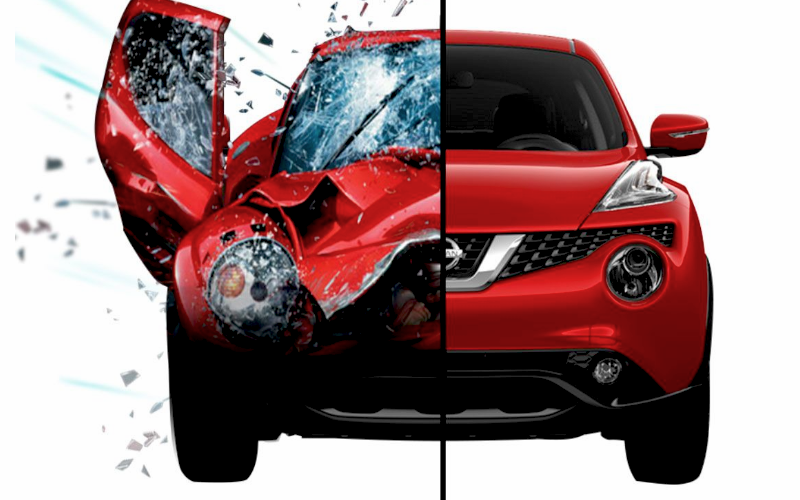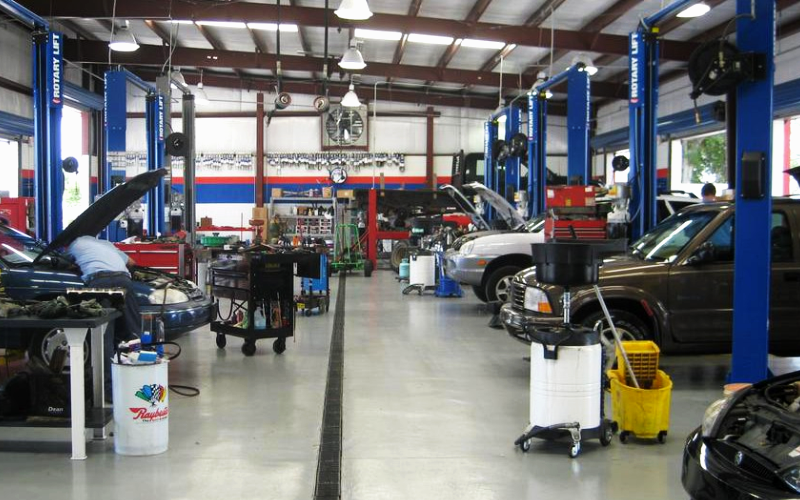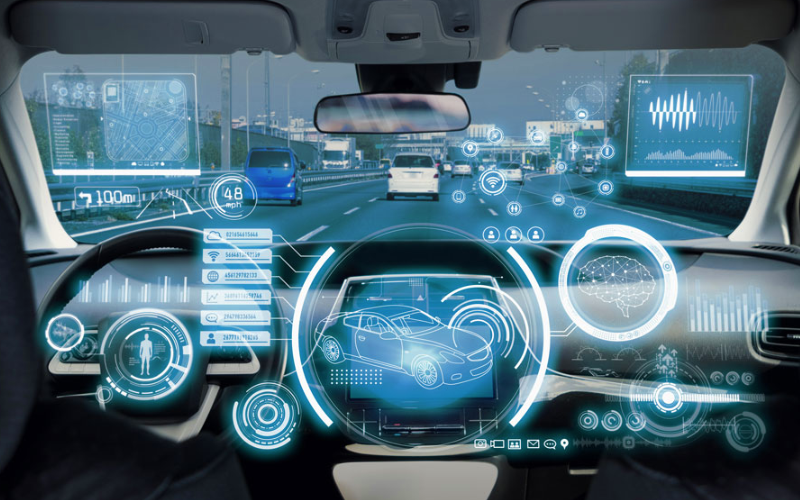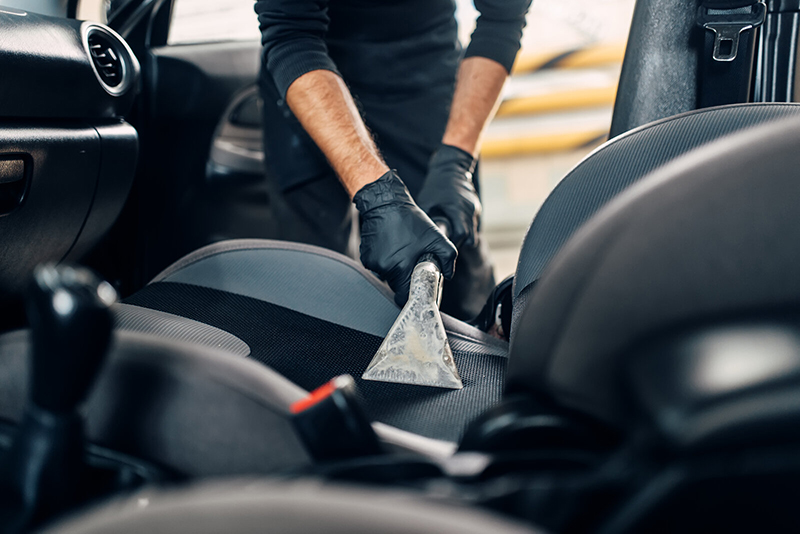Getting into a traffic collision on the road is the one thing that no driver anywhere wants to experience firsthand. If it does happen, however, you will likely be on the lookout for auto collision repair services in the area. What exactly do these providers do? This is the main subject of today’s blog. We’re creating a comprehensive guide to the world of auto collision repair.
Background: What Level of Serious Damage Can Be Repaired?
When you’re involved in an car collision, the first consideration of course is the health and safety of everyone involved. For the purposes of today’s blog, we’ll assume that in the collisions we discussed, the drivers and passengers involved all walk away from their accidents at least relatively unscathed. It’s the damage to the cars that we want to focus on in today’s blog.
After a collision, there are two important players involved in getting you and your car back on road again: your insurance provider and the auto collision repair shop. The first thing that happens is the insurance company will, probably in conjunction with an approved repair shop, determine whether or not the car is worth repairing, or if it should be written off. How this is determined is quite an interesting point.
How is Damage Assessed?
Different insurance companies may vary in the precise methodology that they use, but broadly speaking, they will divide collision cars into the four basic categories:
- Repairs are possible and won’t exceed the pre-accident value of the car
- Repairs are possible but will exceed the pre-accident value of the car
- There are salvageable parts but the body/chassis is beyond repair
- There are no salvageable parts at all
These four conditions of the car cover all the possible categories that just about any insurance provider will consider when thinking about how to proceed. The first category is the only one that is likely to result in repairs being made to the vehicle and it being returned to the owner. Costs will be covered by the insurer, minus the voluntary deductible agreed by the policy holder. The second could end in the insurance company paying only to the pre-accident value, with the rest having to be paid for by the owner.
The third category will result in the car’s body and chassis being sent for crushing and scrapping, but only after the valuable and salvageable parts have been broken away to be sold separately. In this way, the insurance company is able to make some of its money back when paying out for the lost vehicle to the policy holder. The final category results in the entire car being crushed and written off, and the policy paid out on.
When is a Car Considered to be Totaled?
The third and fourth categories above result in the car not even being eligible for repairs, which means that they are considered as “totaled” vehicles. There is actually a set of criteria to better determine this, and it is used by insurers and their assessors across the US, with similar standards being used around the world.
The general rule of thumb is that if the repair costs exceed at least 70-75 percent of the current value of the vehicle, then it will be written off as a total loss that’s not worthy of repair. At this point, they will also assess the potential for salvageable parts which can be used to recoup some of the financial loss.
The loss comes because if a car it totaled, and assuming that the policy holder has not broken any of the terms of their insurance agreement, then it falls to the insurance provider to either replace or pay out on that car. The insurance policy will need to include collision insurance, of course, which many nowadays do. Assuming that collision insurance is part and parcel of the deal, then the insurers would pay out the current cash value of the car to the policy holder.
Off to the Repair Shop
If the damage does not break these thresholds, however, then it comes to the question of repairs. As we mentioned above, insurance companies will pay for damages minus your personal deductible which varies from policy to policy as long as total damage does not exceed 70 percent of the vehicle’s value. Even on the borderline, it’s questionable.
Let’s assume that the insurer has agreed to perform the repairs, then it’s off to the auto repair shop to get started on the work to repair the vehicle.
What Services are Offered by an Auto Collision Repair Shop?
Obviously, there are potentially hundreds of ways that car can be damaged in a collision. We won’t go through every single eventuality, but below we will talk more about the specific services that a typical auto collision repair shop provides. It’s useful to know what these auto shops do, how they do it, how long it takes and how much it is likely to cost on average.
Damage Assessment
As we touched on above, the very first thing that a collision repair shop does is to assess the amount of damage that has been done to the vehicle and make an estimate on the total cost. The auto shops typically work closely with insurers to determine the next steps. They provide their estimate to the insurance company, who then will liaise with the policy holder to determine the decision on what happens next.
Assuming that repairs are going to be carried out, below are the kinds of repair services that you can find in your typical collision repair shop.
Collision Repairs
Here we are referring to general collision repairs. Some of the larger and more specific types are mentioned further below, but besides these, collision repairs are likely to include the following kinds of repairs:
- Scratches and paint correction for chips, nicks, flaking, orange peel and other problems. This can get expensive when larger areas of the car are affected. Equipment here includes paint correction kits, primer, sandpaper and related small tools.
- Repairs to glass such as windows, windshield, side mirrors and rear window. These can range from minor chips and cracks to full-blown windshield replacement. Glass repair needs replacement glass/mirrors, as well as cutting tools, suction cups for holding large panes like the windshield and special adhesives to attach new glass.
- ADAS alignment, which comes as a natural consequence of having major repairs done after a collision, especially when the damaged area is one that houses one of the many cameras and sensors that make up the ADAS network. Necessary tools include OEM-specific targeting panels, lasers, and special software.
- Component or part replacement for any individual parts that have been rendered unusable or irreparable. The shop will need access to OEM parts to get these repairs done.
Automotive Refinishing
This refers to extensive work done on the car’s paint and clearcoat. We did mention paint correction for minor problems like chips, nicks and flaking, but these are minor localized issues that can be fixed without having to repaint the entire vehicle or even large sections of the vehicle.
When the need for painting is more extensive, it becomes a job of automotive refinishing. Total body covering only accounts for small percentage — about 3.5% to be precise — of total work done in these departments on average. About 95 percent of the work is done on doors, wings and other large sections. Spot repair described further above accounts for another 1.5 percent of work done in collision repair shops. Many minor repairs are actually carried out either by the drivers themselves, or smaller auto shops.
The main tools used in the automotive refinishing department will include spray booths, which will invariably be smaller units where hand-spraying is done rather than the larger industrial automated units with pneumatic spraying used by car part manufacturers. Besides this the shop will have protective gear for paint workers, and other measures taken to keep the paint booths dust free.
Unibody Structure Repairs and Frame Straightening
When a car features a unibody structure, it means that the frame and the body of the vehicle are not separate entities, but rather joined together as one. The alternative to a unibody structure (and present on many older car models) is a subframe, which features a modular structure. Since at least the early 2000s, the unibody design has been the industry standard.
Unibody repair can involve fixing small dings and dents, or performing a major overhaul after a more serious accident. It’s very rare for any two unibody repair jobs to be the same. The principal jobs include:
- Straightening a twisted or bent frame
- Reattaching/welding parts of the unibody
- Rebuilding of specific parts of sections
The skills involved are very particular, as is the equipment needed. The welding, for instance, is not just ordinary welding, but requires a very special kind of heat control that means you need particular tools and, more importantly, very particular skills on site to help complete the job.
To perform the straightening of a twisted unibody often requires unique hydraulic tools since it’s not exactly as though two technicians can just stand at either and end and pull. Computerized measuring tools are used to get precise numbers on the current “geography” of the frame and where exactly the stretching or twisting needs to occur. All of this ensure great precision in the finished work and helps make it faster and cheaper to achieve.
Paintless Dent Removal
This process is usually referred to simply as PDR, and is a fast and efficient way to remove dents from a car’s surface. PDR can only happen in circumstances where the dent has not broken or otherwise damaged the car’s paintwork. Furthermore, the dents are typically smooth in their depression and don’t feature any serious creases.
A PDR technician makes use of a range of tools, from metal rods to suction cups, wooden blocks and specialist rubber mallets to get their job done. The first step for them is to assess the dent damage. Once they confirm that the paint is intact, they will proceed to locate a way to “gain entry” to the dent, which means position themselves in such a way that allows their tools to be able to be worked on the dented area from both inside and outside the car.
After looking closely at both sides of the dent, the PDR technician then uses their tools to gently apply pressure to two sides of the metal and coax the metal back to its original shape. Compared to the more traditional paint/filler methods of dent repair, this one is faster and much more cost effective.
Hybrid/EV Repairs
Hybrid and electric cars have their own unique challenges to sort out in the auto collision repair shop. While the exterior of the car might be largely the same, there are critical components that may need to be repaired, such as the all-important battery pack. Besides the different powertrain, drivetrain and internal electrical systems like regenerative braking, the remainder of the car in terms of bodywork is the same as a regular gasoline/diesel vehicle.
Bumper/Fender Repair
In all manner of collisions, major and minor, the bumper is nearly always the primarily affected component. Bumper repairs involve fixing dents, fixing cracks, repainting the bumper, welding and more processes. Bumpers can almost always be repaired, unless the collision was very serious, in which case you might need a full bumper replacement.
The bumper cover is typically removed and worked on separately within the repair shop. Step by step, the bumper will be fixed, repainted and then reattached to the vehicle.
How is an Auto Collision Repair Shop Organized?
Auto collision repair shops are typically quite a lot larger and more compartmentalized than a more regular or ordinary auto shop. An ordinary mechanic will have a space sufficient for 2-3 cars and the tools to lift cars, diagnose issues, perform maintenance, fix problems and even perform upgrades and component changes. A shop that specializes in collision repair and related services, however, needs the additional space on site to house the various departments and specialists that work there.
A typical efficient and well-organized shop will include separate divisions. For example, there will be a section working on panel repair, another for unibody and frame adjustment, and another for painting and finishing, etc. The shop has to have a logical and efficient flow for cars to come in, start at the right point and proceed step by step until it is ready to be returned to the owner. Getting the flow wrong can result in mistakes being made, tasks being extended beyond their estimated time frame, and worse.
High-tech wizardry is increasingly incorporated into collision repair shops, in particular computerized diagnostic and scanning equipment that is able to assess damage levels and required next steps with frightening accuracy. These tools help to speed up the work of collision repair shops, as well as the overall quality of the work.
In decades past, cars of all stripes shared many of the same characteristics, and so repair methods were also shared between multiple models. While many common threads still do exist, manufacturers have bifurcated in many areas of technology and design. This means that now there are very particular methods that distinguish, for instance, how to repair a Nissan after a collision versus how to repair a Jeep.
Emerging Technology
The way that auto collision repair shops are organized now will always be set to change as new technology emerges and changes the way that new and existing technicians are trained and work. Some examples of new auto collision repair technology include:
- Car accident VR training – Virtual Reality technology is being used to help apprentice and existing technicians learn about new vehicle design innovations and repair techniques. Companies looking to hire new technicians are enticing them with these kinds of innovative and engaging training technologies that are far more appealing than just studying textbooks or listening to instructors point and speak.
- Blockchain is being incorporated more and more into collision repair as a sector, in particular for supply of parts and components. As it stands, systems employing blockchain can better keep track of components, where they are coming from, how and when they are being used and their authenticity as proper OEM parts, for example. In future, it is envisioned that blockchain technology can also be used to put accident records, estimates, repair orders and parts orders all in one place and controlled by blockchain and organized in a more secure fashion.
- Electrification – This refers to auto collision repair shops preparing for the future by adding in specialist safety equipment and training programs to help technicians prepare for the unique safety implications that come with the impending all-electric automotive mainstream that is rolling towards the entire world at ever-increasing speed.
Conclusion: What Makes a Good Auto Collision Repair Shop?
In the end, what we can conclude is that there is a great deal to learn about auto collision repair. The main thing that experienced technicians will tell you is that no two jobs are ever truly the same. Even if there are some common threads that run through the work like the need for body panel hammering, welding, repairs to the electrics or something else, the exact circumstances will nearly always differ, especially for more serious collisions.
Even for minor problems like dents in the bumper, the dents themselves are like snowflakes, each one sharing some traits but having a unique and distinct shape and no two being absolutely the same. This means that a good auto shop working on collision repair will offer flexible services, an experienced team, and the credentials to back up the work they do. They will also organize their shop with a logical and efficient flow that allows the various different automotive repair specialists to work effectively.
The field used to contain a lot of common components and processes, but nowadays the prevailing trend is that auto shops need to be able to perform specific processes that are unique to each OEM brand. This means that good auto collision repair shops will continually be training their staff, and not just the apprentices. They’ll incorporate new tools and technology and gain certifications to prove that they are both equipped and qualified to work on specific brands and perform specific processes.
When you visit the website of an auto collision repair shop, you will likely find that reputable ones list the brands for which they are certified to repair up to the latest standards. Audi, VW, Subaru, Infiniti, Nissan and just about every brand you’ve heard of has put in place such certifications and requirements. You should therefore check that any collision shop you use is ready to work on your particular car. Fortunately for many of us, these are things that are usually determined ahead of time by the insurance company.



